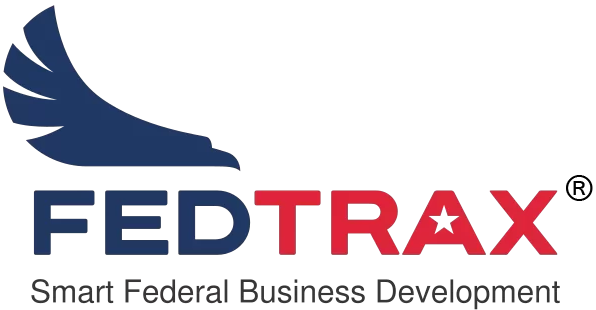
In my conversations with CEOs about business development, the topic of LinkedIn will invariably arise, with mixed opinions. Some top executives tell me that their best salespeople use LinkedIn all the time to seek out and forge new relationships that convert into business. Others think it is another social media waste of time and energy better spent knocking on doors. So what is the truth? Can your sales teams use LinkedIn prospecting effectively, and how?
What LinkedIn Is
LinkedIn is an online community of business professionals comprised from people from nearly every working discipline, with an emphasis on the white-collar, professional type fields, such as technology, software, consulting, law, business services, and corporate executives. While it fits the definition of social network, LinkedIn is the only network in this category that focuses solely on business. Originally LinkedIn was used by and large by job candidates looking for their next gigs, and the professional recruiters who seek to fill positions. Consequently professionals such as career counselors and resume writers find fertile ground for their wares on LinkedIn. That much has not changed, yet due to its popularity and scale, many business people traffic the network that aren’t looking to find new employment, but for a host of other reasons, like…
- LinkedIn prospecting for sales
- Promoting their own businesses
- Finding resources, consultants and vendors
- Building community and exchange targeted industry-specific information with peers
- Creating and strengthening and personal networks
- LinkedIn prospecting can be used to generate new business opportunities, so keep reading.
What LinkedIn Isn’t
If you’re looking for a “social” social network to talk about recipes, movie reviews, and your kid’s ballet recital outside the context of business, LinkedIn is not your network of choice. As any growing network with millions of subscribers will discover, it is also the outlet for millions of spammers, trollers, and others looking to shortcut their way to business success. This has led to a high degree of mistrust and suspicion from the real business professionals that you may want to meet and establish a relationship with, and that makes your life a little difficult.
LinkedIn claims to not want mass marketers and spammers on the service, and generally has features that discourage the practice, like the self-policing nature where members can report unwanted solicitors, but is a bit hypocritical in this regard. If you have the money to upgrade to the Premium or Business memberships, LinkedIn will enable you with the tools to create shortcuts and become the nuisance that they purport to not want. Users will find that if they engage in spamming tactics and wear out their personal networks with direct selling, they soon won’t have a very big network and may get banned from the service. Let’s discuss the right and most successful means of using LinkedIn prospecting to develop business relationships that last and produce.
Common Threads
There are dozens of ways to make connections on LinkedIn experience, be found more in the search function, and get the opportunities flowing, but in this article we’re going to focus on just one: giving people what they want.
What do I mean by that? If you want to forge relationships on LinkedIn that may want to either do business with you or refer you, you need to look for engaged members. Engaged members believe in LinkedIn as a business tool, they have a healthy number of contacts, mostly hand-picked, and they are active in discussion groups. They go to the site to give and receive value in the way of information, new techniques, industry trends, news, finding offline venues to personally meet up with others of the same industry and mindset, and find peer-to-peer contacts. For you, the best place to find these engaged folks for LinkedIn prospecting are in targeted discussion groups. These groups provide the common threads of interest for people by industry, geography, and specialty practice or other horizontal connection (like a software package user group).
LinkedIn Group ABCs
The best and right way for you to engage others on LinkedIn is to register for and become active in the user groups that your prospects would find valuable. If you sell healthcare apps, get involved with HIMSS. If your customers are lawyers, sign up for a few groups that serve up legal content. For every group that services the market you target, there is likely a corresponding sales and marketing form of that vertical that provides instruction and best practices for those like you that serve the industry. These can become great learning laboratories for you, if you choose to use them.
When considering a group, you want to look for the following elements:
- It is specific to your target market and, if appropriate, geographical region.
- It has a significant membership; greater than 5000 members is a good place to start, although you can get value from regional or niched groups that only have a few hundred members.
- Members are active. This is easy to determine. Look in the discussion area and the post dates on items. If the last post was 3 months ago, move on. If they are posting every day, it is a dynamic group.
LinkedIn Prospecting – Speed Dating for Success
Connecting and evaluating business relationships on LinkedIn can happen fast, like speed dating. However, there are some beach heads you should establish first to increase chances for success and to build a strong LinkedIn network.
Adding Value
Before reaching out and touching group members, add value to the group. This doesn’t mean spamming the group with offers. On the contrary, you need to begin to establish thought credibility by beginning thought provoking discussions (questions work great for this) that the group will have an opinion on and that matter. You can post an open-ended, neutral thread to gage opinion, or you can take a position and wait for the controversy to reign upon you. For thought leadership, it can be helpful to share a link to a relevant piece you have read or written, provided it isn’t pushed. I like to use the rule of thumb that readers can respond to the discussion post in the group regardless of whether they click through on the link.
You can also respond to other thought provoking posts, using either the Like feature or better, by providing your opinion that supports, adds to, or respectfully contradicts the poster. Only respond to legitimate, content-based posts of value, not spam posts that are selling something or promoting a job for hire. Do this enough and you become a LinkedIn influencer with your profile highlighted in the right margin of the group’s discussion area.
Connection Process
Now you’re ready to engage, so here comes the speed-dating part of the LinkedIn prospecting process.
- Find potential contacts – Go through the group’s member registry. You likely have a lot of 1st level contacts already, so scroll until you get to 2nd level people. Look by title, company, and description for interesting people to connect with. You can check out engagement level by seeing the number of contacts the person has. If it is > 500, they are active. Note: As of this writing, LinkedIn has recently removed the number of connections displayed in the group membership listing. You now have to click on the person’s profile to find that out. You can also look through the active discussion posters and those who have commented on your posts.
- Send out Invitations – Click on the Connect link next to the person’s name. Use the group you are in as the common reference point for connecting by clicking on the Groupsradar button. You will likely find you share several groups with the person. Never use the default LinkedIn invitation. Instead, send out something like, “I noticed your profile in the XYZ group. You look like a terrific professional contact in the industry. Please accept my invitation.” You referenced the point of connection and are simply network building, and you personalized the note. All these increase the odds of getting a ‘yes’ to the connection request. It is very rare you will be turned in for using this professional, networking technique.
- Follow up with Connections – If you followed this process, you will get about 1 in 3 or 1 in 4 people saying yes to the connection requests, some taking several weeks depending on how often they are online. No matter. Once connected, you now can follow up with a specific, LinkedIn email (you don’t need to use Inmail credits) thanking the person for connecting with you, offering to be a resource (such as providing invitations to your contacts, most won’t take you up on it), and, at your discretion, asking if the person would be open to a 10 minute phone conversation just to trade notes on each other’s business and learn more.
That’s it. You’ll find that only 1 in 5 or so will take you up on the phone conversation, so essentially you had to send out between 15 and 20 invitations, hand-picked by you as potential LinkedIn prospecting targets, to get a conversation. That’s a heckuva site better sales analytic than calling a list, easier and more fun for you. And you are systematically building your network larger and larger, which has other benefits.
What you have just done is started a relationship using a proven process. There may be no immediate business but you’ve upped your chances of success over time in a major way. The rest is up to you as a business professional in Sales.
